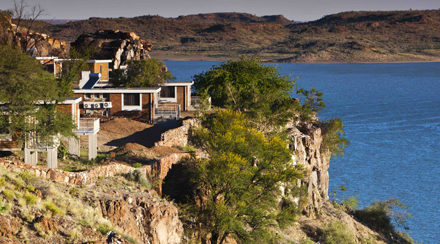
21 March 2014
 What happened?
What happened?
The previous weekend and the early part of this week brought a surprisingly persistent amount of moisture into Namibian airspace. The first promises appeared on Sunday when the advancing low pressure area covered most of the north-eastern half, penetrating deep into the west reaching the pre-Namib by Sunday evening.
Towards the middle of the week a synoptic pattern develop that is more readily a signature of middle January than of middle March. The ever-present South Atlantic high pressure cell grew somewhat in intensity but the core held its distance from the western coastline of the continent. Meanwhile, much further south, the advancing bulge of this high pressure cell brought strong southerly winds to the Western Cape, reaching all the way north to about Walvis Bay. A secondary high became prominent south of the Mozambican Channel, with a marked low pressure circulation over the Indian Ocean north of Madagascar.
As the secondary high made its presence felt over the eastern half of the sub-continent, it helped to circulate substantial volumes of moist air across northern Mozambique, Zambia, the DRC and into Angola. From there, with the high pressure cell providing the anti-cyclonic push, it was just a matter of time before this system crossed Namibia from the north and produces some spectacular weather events over the Kaokoveld, Damaraland, the rest of the Erongo Region and in a north-west south-east band across the southern half of the country.
Later in the week, in the wake of the first moist intrusion of Sunday, Monday and Tuesday, a very prominent trough (low pressure band) developed reaching for more than 2000 km from southern Angola across the Namibian interior, right up to the Eastern Cape Province. This massive conveyor of moisture on the surface and in the middle levels brought cloud development across most of the country on Wednesday and Thursday.
Conditions for rainfall remain promising at least up to the end of March but there is still a noticeable influence from the secondary high pressure cell over the eastern sub-continent. Depending on whether the core shifts east or west, either over Mozambique or Zimbabwe, it can provide the engine to drive the lingering Inter-tropical Convergence Zone (ITCZ) which has re-established itself just north of the east west line that forms the border with Angola.
What’s coming.?
The most reputable forecasts see a wet Independence weekend as well as widespread but isolated showers continuing for most of next week. Conditions at Lüderitz will deteriorate markedly with a strong southerly wind bringing the first real colder air inflow after the summer. This will be felt as far north as Walvis Bay.
For the southern half of Namibia, the wind will remain predominantly south-east to east veering to a strong north-easterly flow over the Okavango and the Zambezi. The Kunene region will experience wind from the north and the north-west continuing the intrusion of moisture which has been the hallmark of this week.
Satellite images show a well-defined anti-cyclonic circulation in the alto levels, i.e. above 45,000 feet. It is almost as if a giant wheel with its axis over central Mozambique is turning across the entire southern Africa. This drives the zonal flow from the Indian Ocean, but it also restrict convection, thus limiting rainfall intensity.











































